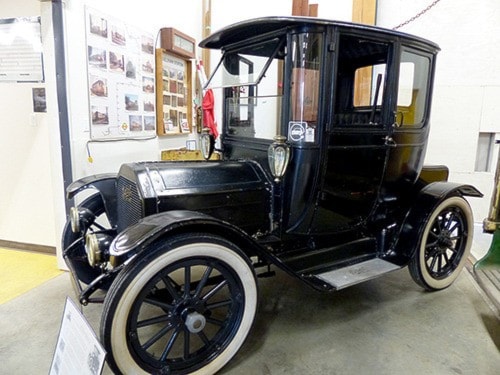Before there was the Prius, the Scion or the Tesla, there was the 1912 Detroit Electric car.
Manufactured by the Anderson Car Company, it had a range of close to 100 miles, and was a popular alternative to the gas-powered cars of the day.
A well-appointed 1912 Detroit Electric owned by the Vancouver Electric Vehicle Association is on view this weekend at Cloverdale Station, 176A Street and Highway 10.
Surreyites are invited to take advantage of this opportunity to see the car, visiting from the Stave Falls BC Hydro Powerhouse Museum.
Electric cars were a favourite of high society, who preferred the car to taking the train, according to Ron Powers of the Fraser Valley Heritage Railway Society.
Women preferred electric cars because they didn't require a hand crank to get them started, unlike their temperamental gas-powered contemporaries, says Powers.
The FVHRS's restored 1912 heritage Interurban – set to welcome its 4,000th passenger since the project began operations this June – is also powered by electricity.
But unlike the Interurbans – passenger rail cars operated by B.C. Electric from 1910 to the mid-1950s which cost a passenger just five or 10 cents to ride – this particular 1912 Detroit Electric car was purchased new at a cost that "exceeded a large house of the day", putting it out of reach for the masses.
It was owned by Mrs. French, a doctor's wife who lived her later years at the Empress Hotel in Victoria.
The car was kept charged in the garage of the hotel, where staff delivered it to the entrance whenever she phoned down. It was driven regularly until 1950.
Mrs. French's car is still in running condition, although the original nickel-iron batteries had to be switched out – but only because they were starting to leak, says Powers.
It's now powered by 96 volts consisting of 16 lead batteries that give it a range of 60 to 80 km.
Many of its other original features are still delightfully intact, from the refined, cut-crystal flower vase hanging above the dash, padded black leather seats, to generous headroom (better to accommodate the large ladies' hats of the day), sumptuous privacy curtain swag, and interior electric lights.
Curved window glass is another expensive, and complicated, feature of the 101-year-old car.
The side windows are pulled up by straps, rather than rolled, and the engine is tucked beneath the wooden floor boards.
The engine is similar to those used in elevators at the time.
Powers says there were thousands of them produced over the few decades the Detroit Electric manufactured them.
In the early days of the automobile, electric cars outnumbered those with gas-powered internal combustion engines on the road, and were considered reliable.
With a top speed of 25 MPH, VEVA's 1912 Detroit Electric won't win any races.
It's steered using a tiller bar with the right hand and speed is controlled with the left.
For more, visit http://www.veva.bc.ca/detroit/.
